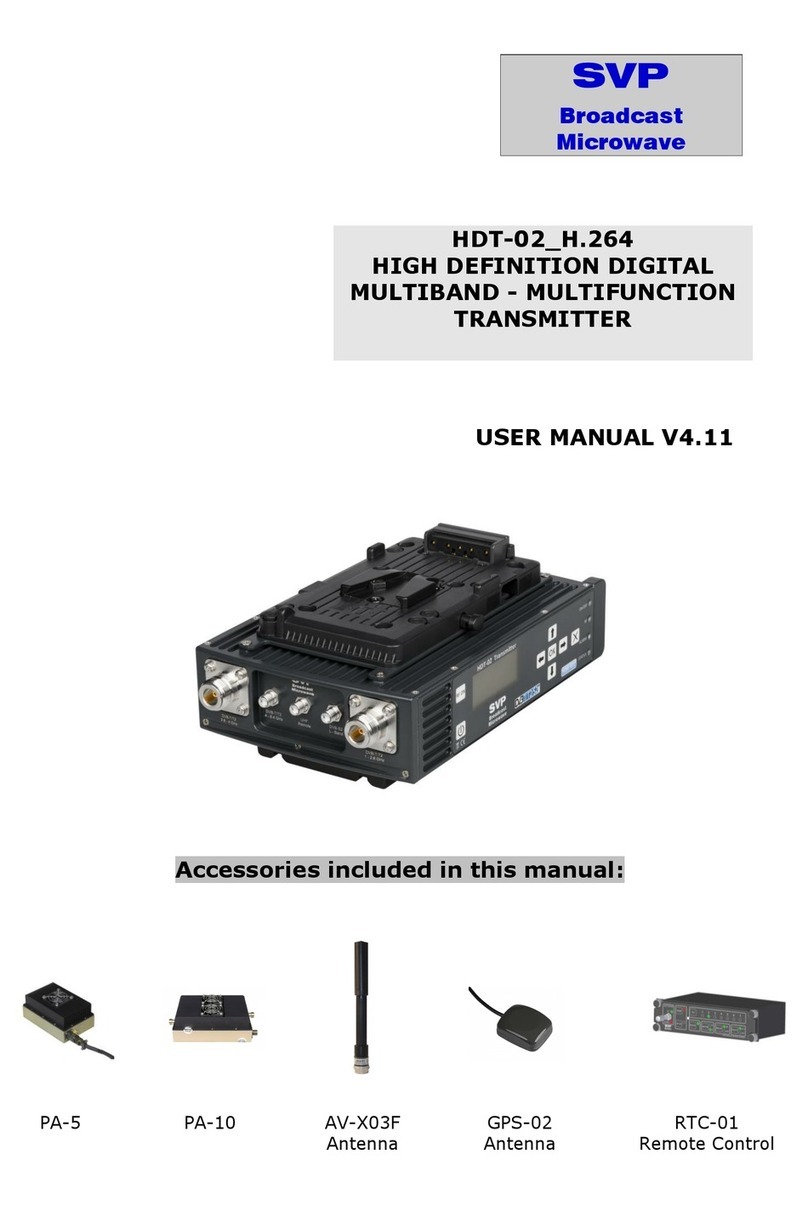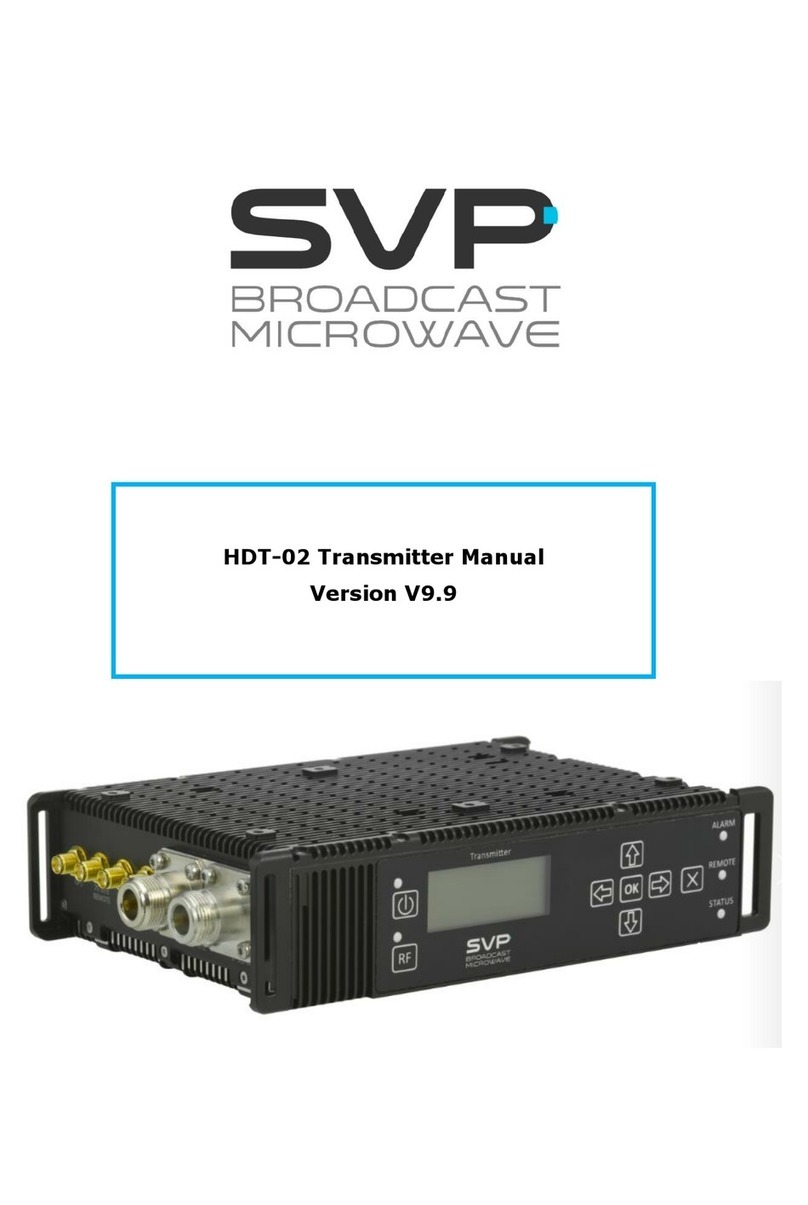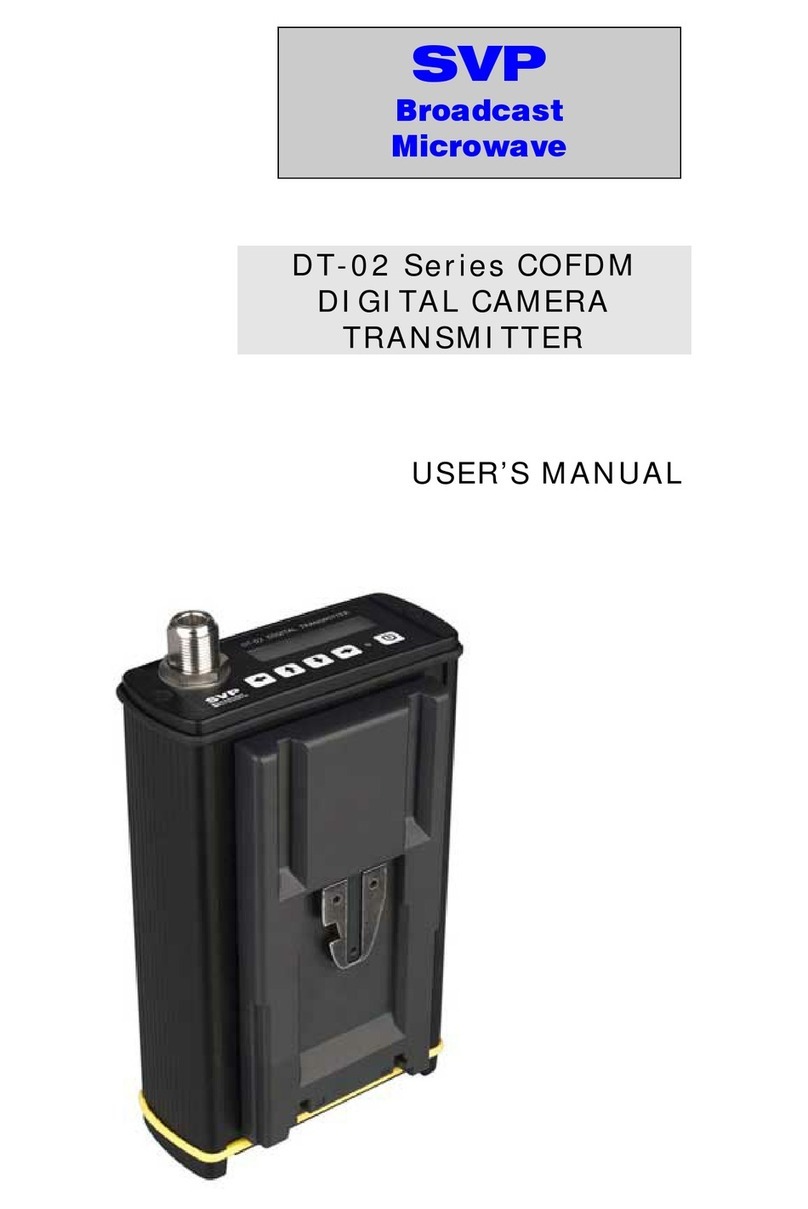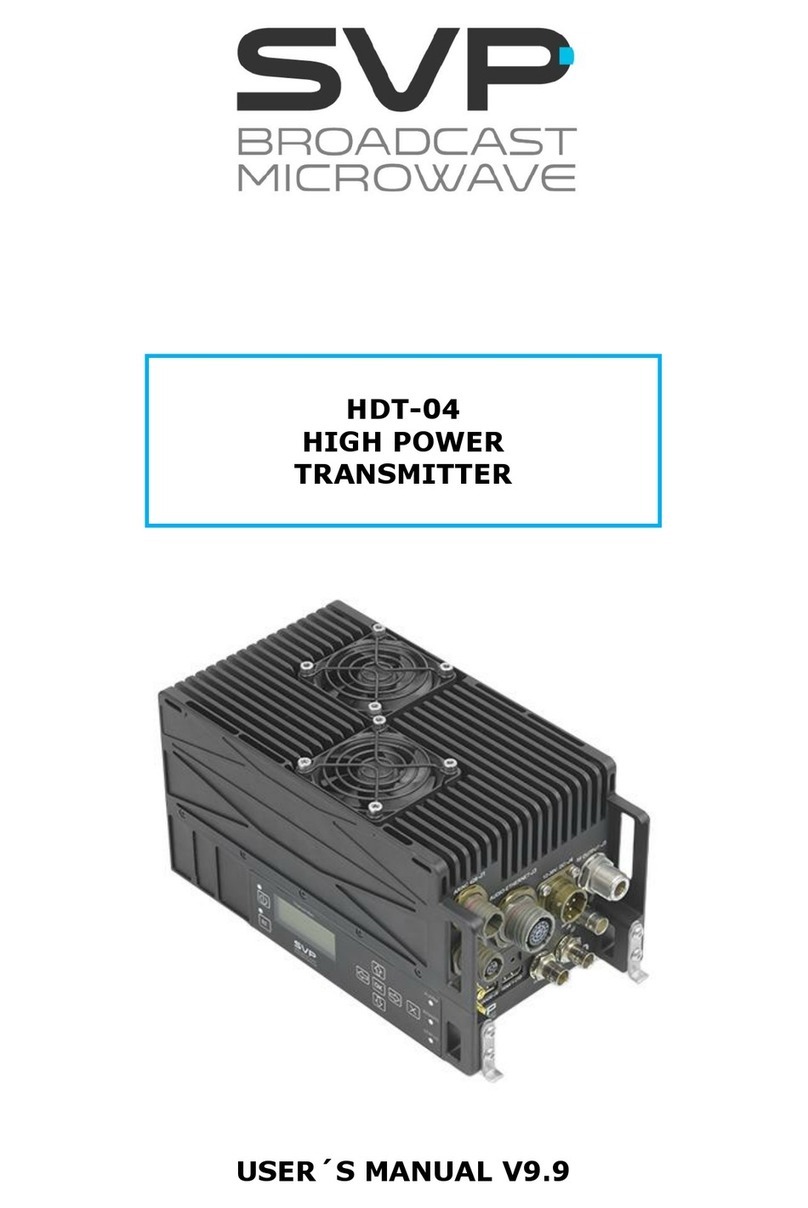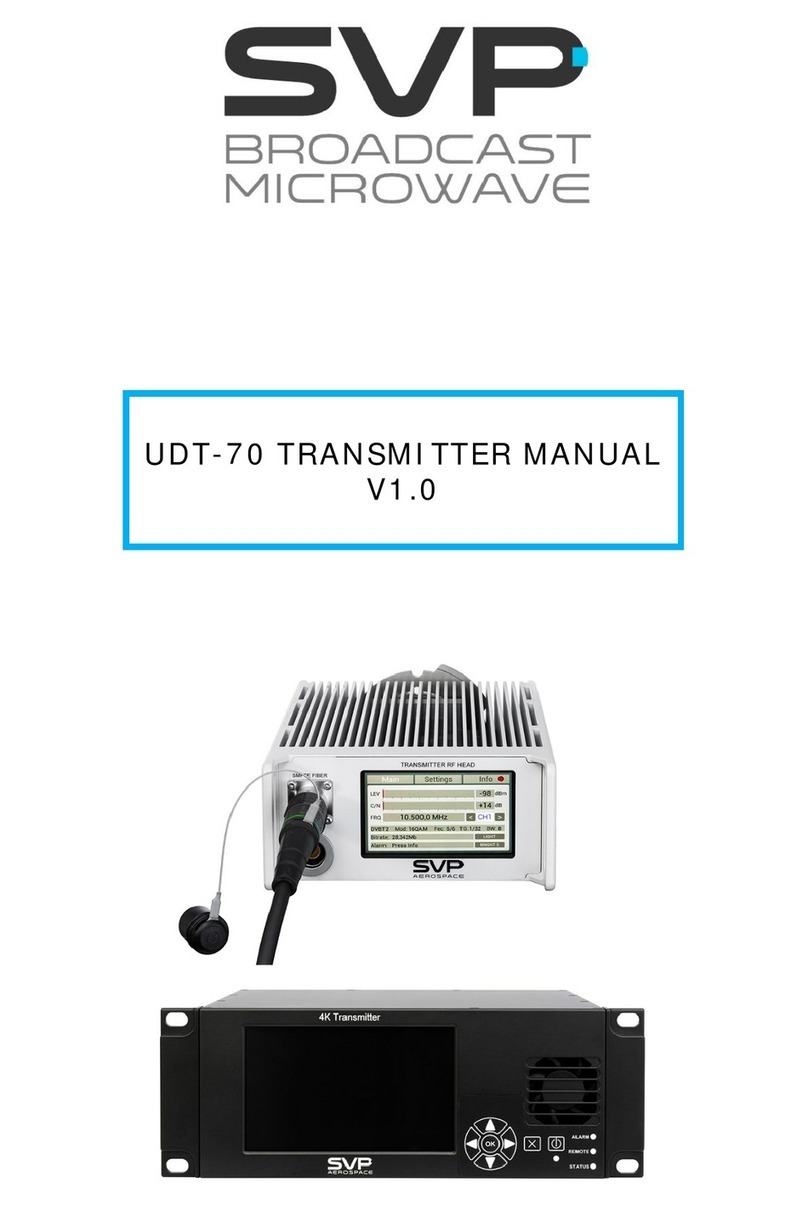10
HDT-70_H.264 High Definition Camera Transmitter
MANUAL V9.0
Main Index
Chapter 1: Introduction ................................................................. 14
Chapter 2: Technical Features ....................................................... 19
Chapter 3: Transmitter Operation and Menus ................................ 23
3.1 Display..................................................................................23
3.1.1 Main Screen for the DVB-T2 ...............................................26
3.1.2 Main Screen for the DVB-T .................................................28
3.1.3 Main Screen for the DVB-S2 ...............................................30
3.1.4 Main Screen for the DVB-S.................................................32
3.2 Transmission Examples ...........................................................34
3.3 LEDs .....................................................................................37
3.4 Front panel ............................................................................38
3.4.1 ON/OFF Button .................................................................38
3.4.2 OK Button ........................................................................39
3.4.3 Cross Button ....................................................................39
3.4.4 Left and Right Button ........................................................39
3.4.5 Up and Down Button .........................................................40
3.4.6 TX Button ........................................................................40
3.5 Menus ...................................................................................41
3.5.1 Menu Navigation ...............................................................46
3.5.2 Menu Structure.................................................................47
3.5.2.1 Encoder Menu .............................................................48
3.5.2.1.1 SDI Input..............................................................52
3.5.2.1.2 HDMI (1/2)Input....................................................54
3.5.2.1.3 CVBS Input ...........................................................56
3.5.2.1.4 ASI Input..............................................................57
3.5.2.1.5 IP Input ................................................................58
3.5.2.1.6 Generator Input.....................................................62
3.5.2.1.7 Audio1 Embedded ..................................................63
3.5.2.1.8 Audio1 Analogue....................................................64
3.5.2.1.9 Audio1 AES-EBU ....................................................65
3.5.2.1.10 Audio1 Tone.Gen .................................................66
3.5.2.1.11 Audio2 Embedded ................................................67
3.5.2.1.12 Audio2 Analogue..................................................68
3.5.2.1.13 Audio2 AES-EBU ..................................................69
3.5.2.1.14 Audio2 Tone.Gen .................................................70
3.5.2.1.15 Data...................................................................71
3.5.2.1.16 Encoder Output ...................................................74
3.5.2.1.17 TS Parameters.....................................................75
3.5.2.1.18 Scrambler ...........................................................77
3.5.2.1.19 Remux (optional) .................................................78
3.5.2.2 RF Menu.....................................................................80






